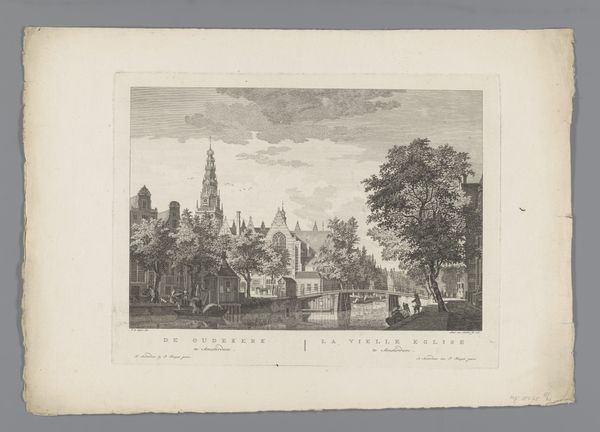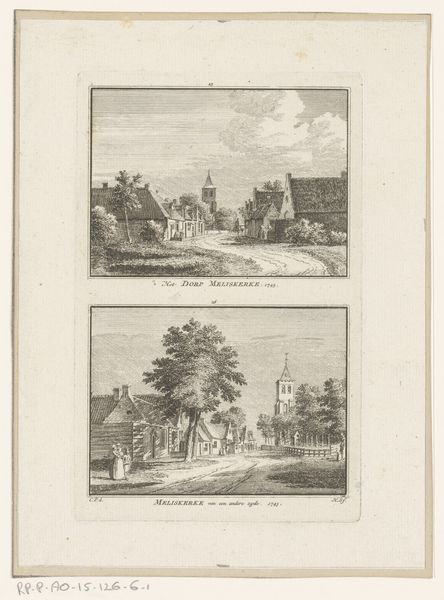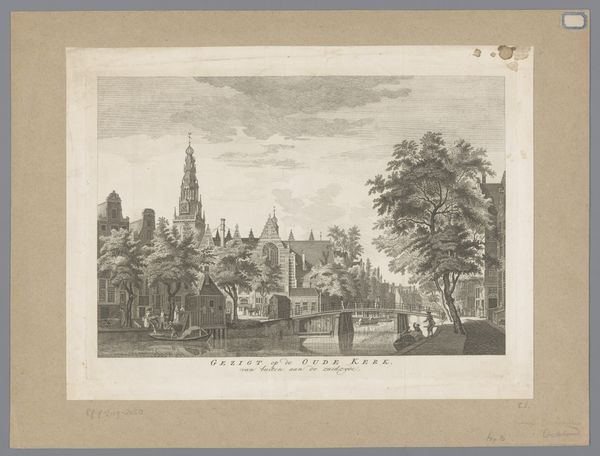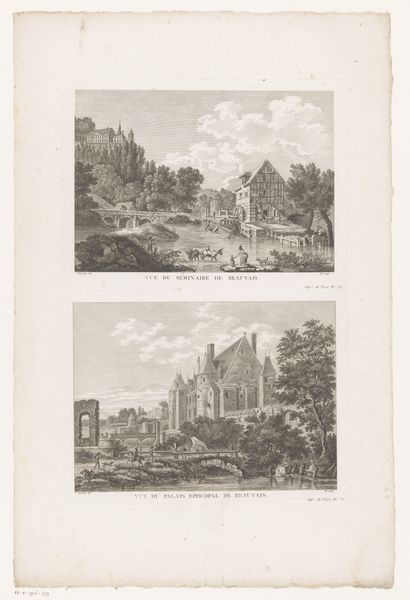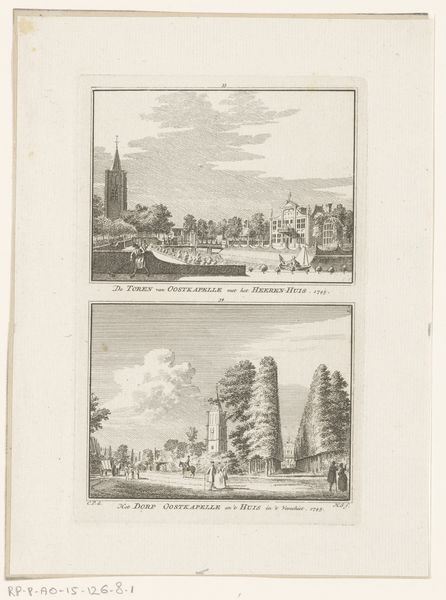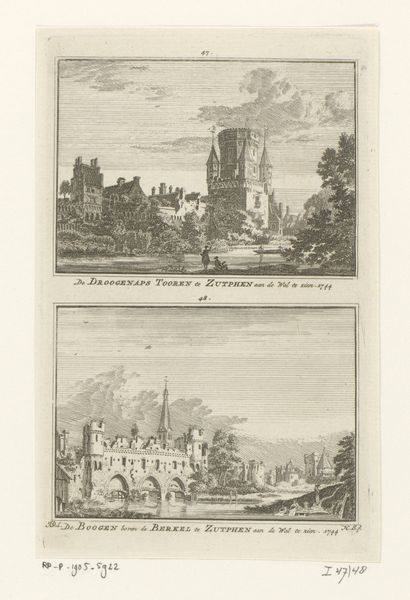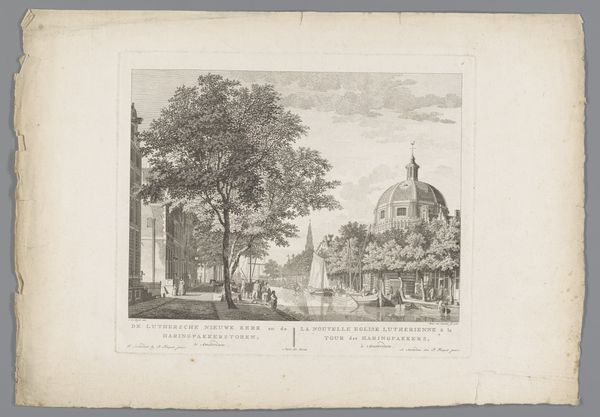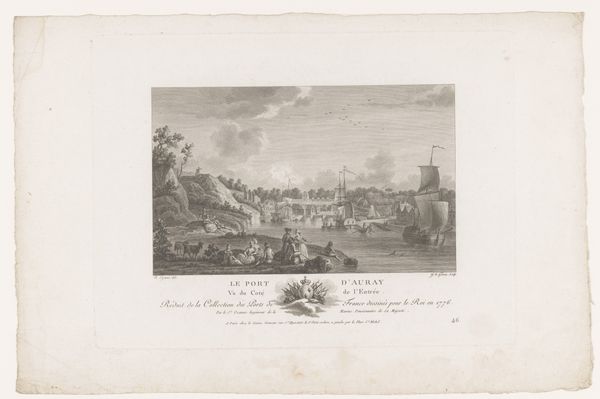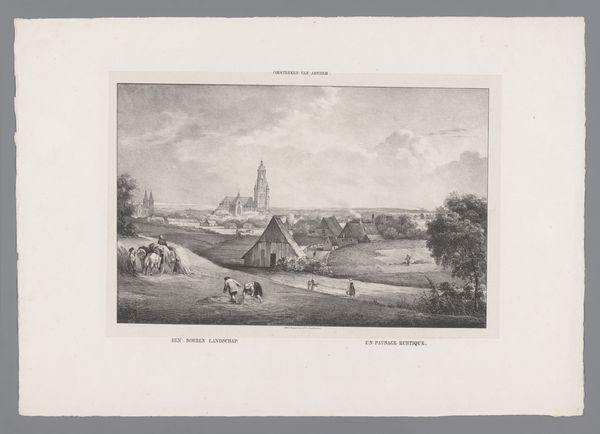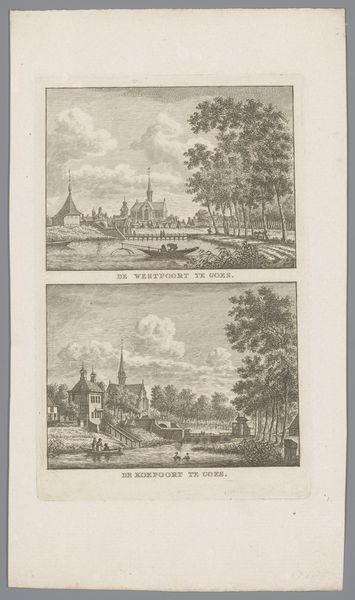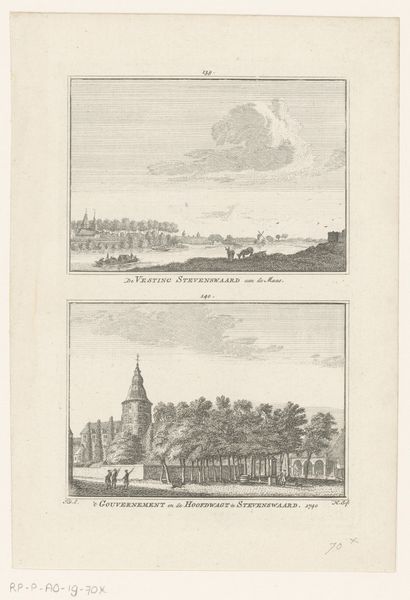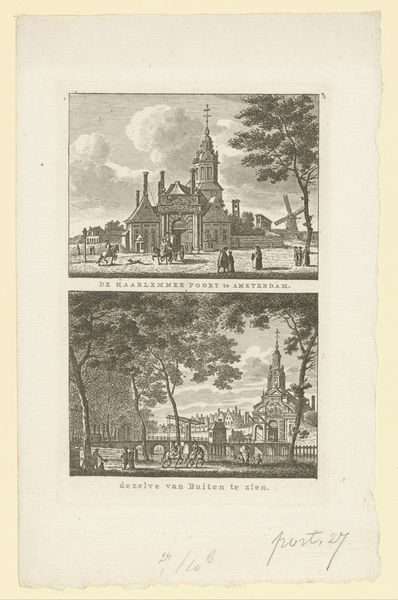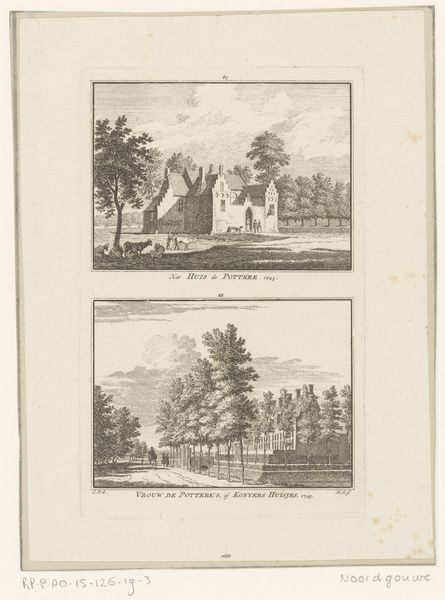
print, engraving
#
neoclacissism
# print
#
landscape
#
cityscape
#
engraving
Dimensions: height 199 mm, width 264 mm, height 199 mm, width 264 mm
Copyright: Rijks Museum: Open Domain
Curator: This engraving presents two views of Marle, one of the town and one of the château, crafted sometime between 1749 and 1817 by François Denis Née. Look at the precision of the lines; it almost feels architectural in its detail. Editor: My immediate impression is one of ordered calm, wouldn't you agree? The grey print on white paper really amplifies that sense of stillness and formality. I think it would have made the landscape feel much more alive to use some kind of wash. Curator: Well, engraving, particularly at the scale seen here, demanded incredible skill and labor. Each line incised represents a physical act, and these meticulous cuts give us insight into the engraver’s production and a strong sense of topography of the village and Chateau, rather than an attempt at a Romantic idealization of landscape. Editor: Exactly! And that focus ties into the political climate of the period, where estates and properties were signs of aristocracy—like badges of honor, and class signifiers of access. Showing Marle in such detail makes it feel almost like a catalogue entry to record its importance in some way. Curator: Right. The clean, unembellished presentation emphasizes a practical function of record-keeping through this image, instead of decoration, it speaks to a changing value set towards material usefulness that marks post-revolutionary culture and its consumption practices. Editor: Yet, isn’t it intriguing that this depiction exists primarily in print, destined for dissemination to the bourgeois public, rather than just remaining as a record for the elite? Doesn't that invite questions about how images reinforce the social status quo of land and ownership? Curator: Perhaps both? Mass reproduction opens it to a new public, changing art consumption through broader viewership as Neoclassicism found its audience. Editor: Precisely, it blurs the lines. Well, that's been an enlightening look at Née’s engravings. Curator: Agreed; analyzing it with respect to process, print, production, and consumption gives the work such incredible weight.
Comments
No comments
Be the first to comment and join the conversation on the ultimate creative platform.

